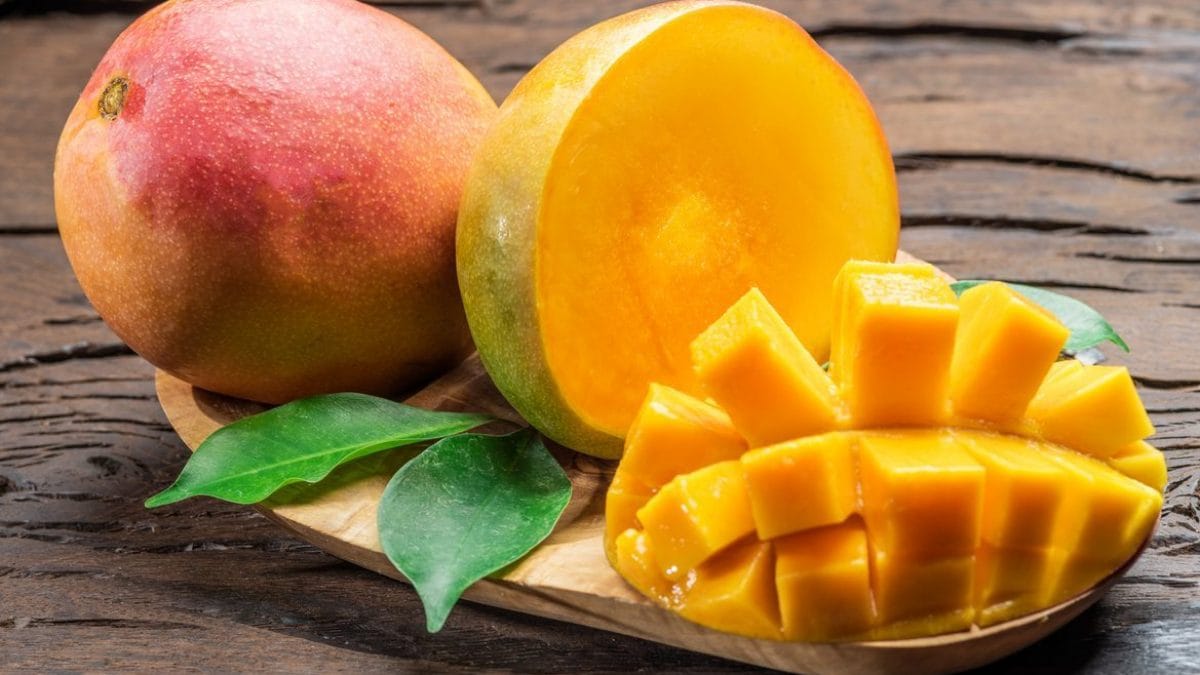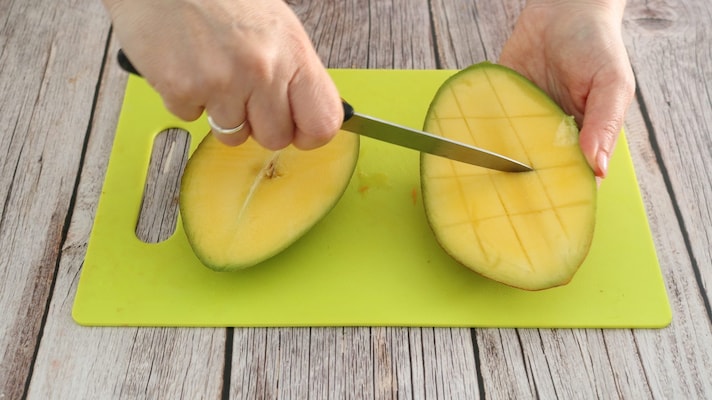
One of the most beloved tropical fruits, the mango has a sweet flavor that can have pleasantly tart notes, perfect for eating fresh or used in a variety of recipes, from salads to desserts, including ice cream and Indian drinks like lassi. It is a fruit with numerous properties, rich in vitamins (such as C and A), minerals (especially potassium), and antioxidants. When ripe, its pulp is orange, sugary, soft, and juicy, practically irresistible, and is the only edible part: for this reason, once brought home, the mango must be cleaned and carefully cut. It is not a difficult operation, but perhaps not everyone knows that inside there is a large, flat stone that must be removed: let's see how to do it with one of the most classic and scenic methods, the porcupine cut.
How to Clean Mango
First, wash the mango thoroughly to remove any dirt and dry it with a cloth. Place the fruit on a cutting board with the long side facing you. Using a sharp knife, cut it in half, leaving the central section of the fruit intact (about 1-1.5 cm), which is where the stone is located. Now, take one of the two halves and make longitudinal and transverse incisions in the flesh, forming a grid, without damaging the peel. With your hands, apply light pressure on the outside of the peel, bringing the flesh upwards: you'll see that many cubes will form – resembling the back of a porcupine – that are easy to separate with a knife or spoon. Do the same with the other halves. Finally, take the central section, remove the peel, and trim away any flesh that remains attached to the stone with the knife.

Advice
Cleaning and cutting a mango isn't that complicated, but you do need to be a little more careful because of its structure, with a thin skin enclosing a soft and juicy, yet slippery, pulp that remains attached to a large, flat stone. This can lead to injury and waste of edible parts of the fruit. Here are some additional tips:
- Choose a ripe mango that still has a firm texture because it is easy to handle and does not fall apart when cut.
- Don't peel it before cutting it, as the pulp is moist and tends to stick to your hands; the peel helps you have a firmer grip.
- The mango peel is taut and thin, so when you make longitudinal cuts be careful not to cut yourself by piercing it with the knife: the suggestion is to always lean on the cutting board.
If you've decided to clean a large batch of mangoes, after dicing them, store them in an airtight container in the refrigerator for 1 or 2 days. Don't wrap them in plastic wrap, or they'll spoil very quickly. To slow down oxidation, you can sprinkle them with a little lemon juice and use them in a fruit salad. A great advantage of this fruit is that it holds up well to freezing, making it very practical: place the cubes in single-serving freezer bags in the freezer and use them, still frozen, to make vitamin-packed smoothies and shakes, ideal for the summer season.
;Resize,width=767;)
